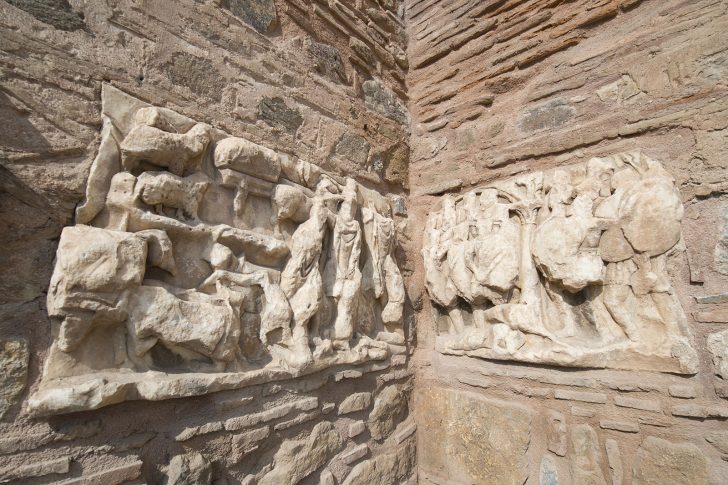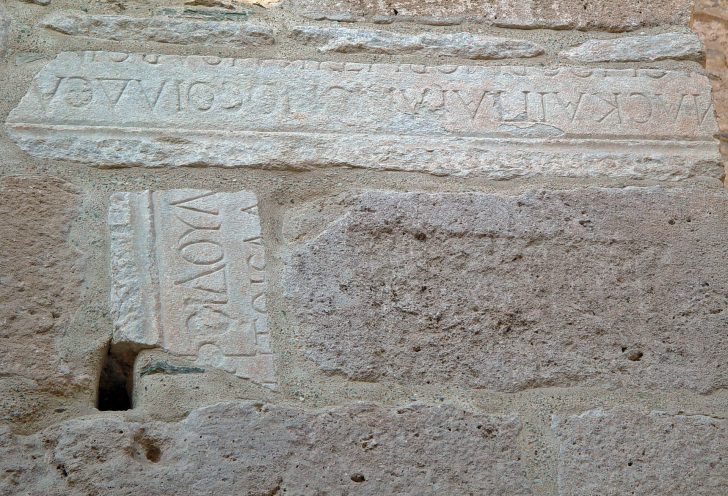Urban reuse is as old as cities. Wherever there has been long-term human habitation, there has been spolia, Latin for “spoils,” as in “the spoils of war.” Historically, the term has mostly been used to refer to stone or other masonry that has been taken from one demolished structure and then been incorporated into something new. [Note: This post was adapted from a fragment of The 99% Invisible City].

As with more modern reuses like stretcher railings or cannon bollards, such recycling can be driven by practicality. After all, why manufacture something new when something used and readily available will do?

The etymology of spolia may seem morbid, but archeologist Peter Sommer offers a more positive takeaway. He observes that “we all accept that visual artists, writers, poets or musicians, even scholars, build their creations on the works of those before them, often incorporating and ‘reusing’ their source material.” Spolia, he suggests, has functioned in a similar fashion throughout human history.

In most cases today, repurposing historically significant artifacts in works of new architecture would be frowned upon by most architects as well as the broader public. Nobody would advocate stripping the Pantheon for parts or turning it into a giant round Dunkin’ Donuts.
Even Postmodernists who sought to bring back variety and delight using historical styles and ornamentation drew inspiration rather than actual physical material from ancient works of architectural design.

Much of what we see in cities around the world is fabricated to fit its current function. But there are exceptions, like bits of gravestones reused on beaches and in parks around San Francisco (after the city outlawed cemeteries). Indeed, many of the building blocks of our built environments are older than they may first appear, refitted to serve new purposes across generations of urban growth and change.
In The 99% Invisible City: A Field Guide to the Hidden World of Everyday Design, bestselling authors Roman Mars and Kurt Kohlstedt uncover explore the origins and other fascinating tales behind power grids, fire hydrants, street signs, safety patterns, and so much more. If you enjoyed this short excerpt, be sure to check out the rest of the book!



Comments (1)
Share
I had the chance to see the Cathedral of Sevilla in Spain and it was a particularly interesting example of this! Many of the lowest stones were arranged from Roman ruins when the Moors took control of the region. Then much of it is Moorish, with the topmost spires built by the Spanish in distinctly Spanish style.